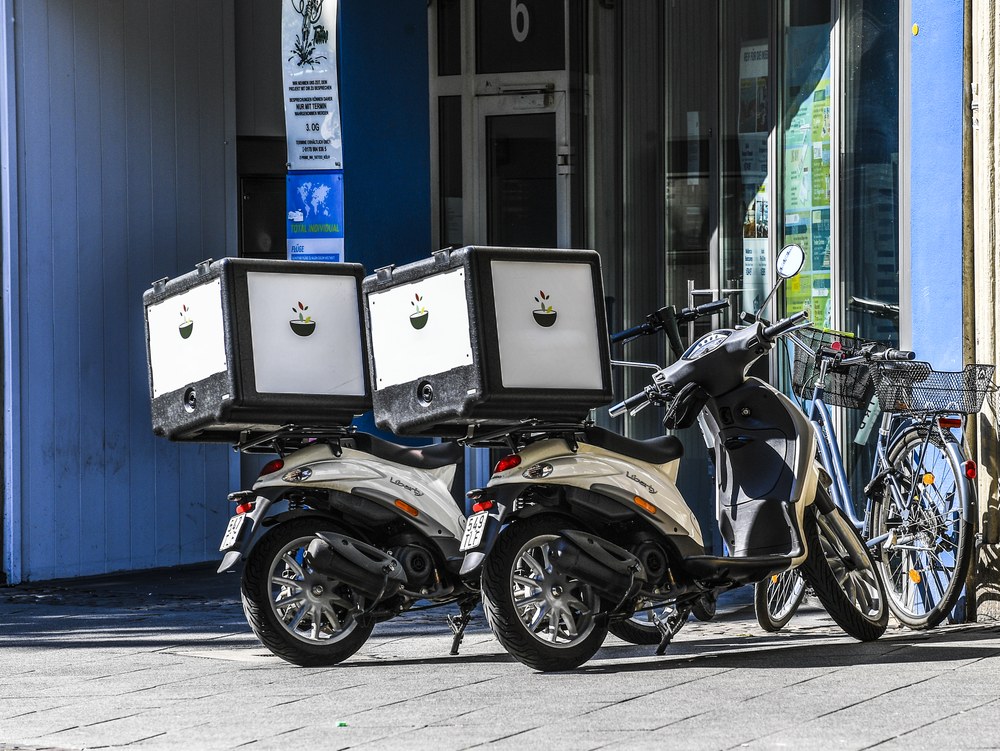Here to stay?

Trendy transport, saviour of the environment or a public nuisance? The explosion of e-scooters, e-bikes and pedelecs on our streets shows that micromobility has arrived, expanding our range of options for getting from A to B. Although expectations are high, early opinion is divided. Laura Gebhardt from the DLR Institute of Transport Research has been involved in this relatively young field since its inception and is one of its few experts. In this interview she looks at this new way of getting around.
Ms Gebhardt, what exactly is micromobility?
: Well, that is an exciting and difficult question. There's no clear or widely-agreed definition, either in science or in the public domain. As a rule, it includes small and light vehicles for travelling relatively short distances with a maximum speed of between 25 and 45 kilometres per hour, depending on the definition. These include e-scooters, e-bikes, Segways and electric scooters. Some have been around for a long time, but above all, the electric drive and the principle of sharing – hiring instead of buying – have given micromobility a boost. In Germany, for example, e-scooters hit the streets almost overnight in 2019. E-bikes appeared a little earlier in the sharing market.
What opportunities does this form of mobility offer?
: One motivation, of course, is the obvious need to be more resource efficient in the future. This applies to both carbon dioxide emissions and land use. In constantly growing cities, space is a scarce commodity. Its availability and use have a significant impact on the quality of life. Cars take up a lot of space and are parked most of the time. Micromobility devices – shared and always on the move – offer an alternative. As a feeder for the first and last mile, they can also help to increase the attractiveness of local public transport.
What are the challenges for research on this topic?
: The biggest challenge at present is that there are hardly any empirical and comparable data. Micromobility is a relatively new phenomenon. Large statistical surveys such as 'Mobilität in Deutschland' (Mobility in Germany) are only carried out every five years or so, and therefore do not yet cover this phenomenon. Although individual studies and projects have been carried out, sometimes giving an insight into usage data from the service providers, it is not always possible to understand exactly how the data was collected or evaluated.
What are the findings so far?
: Three years of research have shown that the average distance travelled is around two kilometres. Micromobility devices are mainly used for leisure purposes, with Saturday being the most popular day of use. The users in cities tend to be younger people and tourists. During the pandemic, distances lengthened, probably to the detriment of local public transport. E-bike sales are steadily increasing and really took off during the pandemic. We are curious to see whether this development will persist.
What questions drive you and other researchers?
: We are interested in how the potential of micromobility can best be leveraged. What framework of conditions, funding and restrictions do we need for this? These questions are of course closely related to our general mobility patterns and routines. How will these change? Who uses micromobility devices for which routes and for what reason? In France and Spain, we can already see a shift from leisure and tourism to a broader group of users. As a researcher, it is exciting to be able to follow these developments so closely. What reasonable and sustainable scenarios exist for the use of micromobility devices? Researchers at the DLR Institute of Vehicle Concepts are investigating the emissions generated during the manufacture and use of micromobility devices and their carbon-dioxide reduction potential compared to other vehicles. Personally, I'm also interested to see if these new modes of transport have a role as a status symbol for certain groups, such as young people.
"Driving an e-scooter instead of walking or cycling is not in the interest of sustainability."
Dr. Laura Gebhardt, DLR Institute of Transport Research
Is this new form of mobility actually good for the environment?
: If they are going to have a benefit, the vehicles must be manufactured, distributed and deployed adequately. Some e-scooter service providers are already paying more attention to sustainability. To achieve the best possible environmental balance, robust and durable vehicle models and replaceable batteries are as important as, for example, ensuring that e-scooters are collected with e-cargo bikes instead of diesel vans. Users should also ask themselves which routes and means of transport they are going to replace with the micromobility solution. Riding an e-scooter, instead of walking or cycling for example, is not in the interest of sustainability. The data show that around 30 million car journeys made each day cover less than two kilometres. In one DLR study, we calculated that 13 percent of car journeys in Germany could be replaced with e-scooters. The potential, then, is clearly there, and the question now is how it can be realised, at least in part.

What does the future of micromobility hold?
: At the moment, micromobility devices are perceived as yet another, often disruptive means of transport. This can and does lead to conflicts, for example when e-scooters are parked on cycle paths or footpaths. If an energy transition is to be implemented, such as moving away from private cars, we will also need a conversation about the redistribution of urban space. Fewer cars will free up space to be redistributed and used by more diverse, different and shared modes of transport. We will undoubtedly see differentiation within the sphere of micromobility: e-skateboards and hoverboards will remain more of a niche product. E-scooters will form a piece of the jigsaw in a sustainable transport system, for distances of two to three kilometres, and as a feeder. A lot will probably also happen with e-cargo bikes. These could be used more and more for deliveries, city cleaning and other services. The potential and role of micromobility stands or falls on the framework conditions. We will not only require innovative vehicles, but also the will to make driving cars less attractive and less necessary.
An article by Denise Nüssle from the DLRmagazine 171


